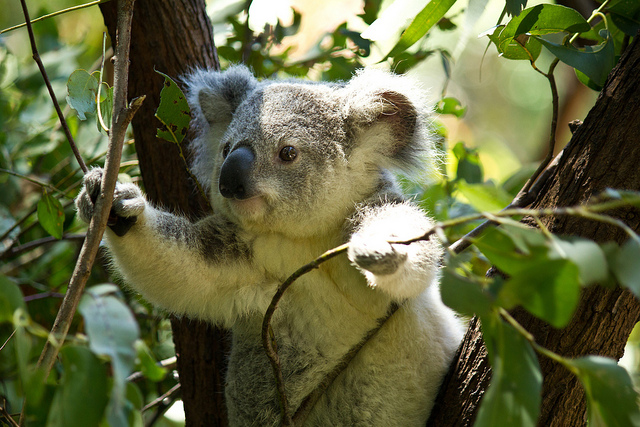
Australia faces a challenge in monitoring and managing its koala population: no one is quite certain how many koalas there actually are. The traditional approach to population monitoring has been for experts to go out into the field and manually count the animals they see in a given area, but this is both expensive and time-consuming, and not very reliable — even the most eagle-eyed spotter can miss an animal or count the same animal twice.
Now researchers from the Queensland University of Technology (QUT) have found a faster and more reliable way to count koalas by using drones equipped with infrared imaging technology. The drones detect heat signatures and use an algorithm to hone in on areas where koalas congregate, then can count the animals even through the foliage of the eucalyptus trees they live in.

The reason that counting koalas is such a challenge is because they live in dense wooded areas, unlike the beaches or open savanna which have been the focus of most animal detection systems. “A seal on a beach is a very different thing to a koala in a tree,” Dr Grant Hamilton, from QUT’s School of Earth, Environmental and Biological Sciences, said in a statement. “This is not just somebody counting animals with a drone, we’ve managed to do it in a very complex environment.”
The researchers verified that the technique was effective by testing it on a group of tracked radio-collared koalas in Petrie, Queensland. They checked that the data from the drones accorded with the data from ground surveys using the radio collars and discovered the drone system was more accurate and precise than manual spotting.
“On average, an expert koala spotter is going to get about 70 percent of koalas in a particular area,” Dr Hamilton said. “We, on average, get around 86 percent … Nobody else has really managed to get good results anywhere in the world in a habitat this complex and in these kinds of numbers.”
The researchers found the drone system to be most effective early in the morning and during the winter months, when the difference in heat signatures between the warm koalas and the cold environment was greatest. The drone used what is called a “lawnmower” pattern, which sweeps up and down in stripes to ensure every part of a given area is covered.

The team doesn’t think drones will replace human spotters, but will complement them instead. The biggest advantage of the drone method is its speed: “We cover in a couple of hours what it would take a human all day to do,” Dr Hamilton said.
The results are published in the Nature journal Scientific Reports.
Editors' Recommendations
- Spot the space missions in NASA’s animated holiday card
- Forget drones. ‘Guy in a jetpack’ spotted by pilots near LAX




